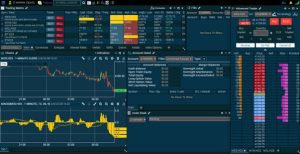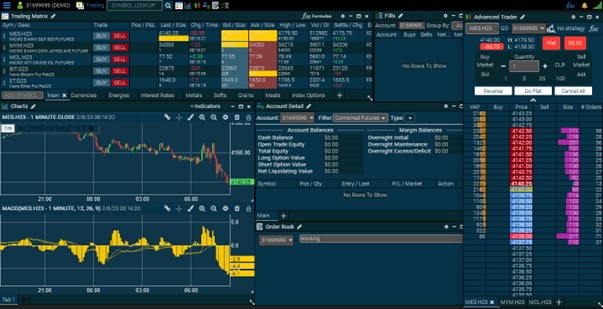Trade futures can be challenging for a beginner. Simply, there are three fundamental strategies that futures traders employ when they trade futures: going long, going short, and spreading. Learning how to trade futures can help a novice investor become successful when engaging in commodities. Education in the various aspects of the industry is necessary for creating profits and avoiding financial loss.
So, let’s dive into the types of orders so you can get an idea of how to start futures trading. When going long as known as BUY, a trader buys a contract in the hope that the value will increase in the future. He keeps the contract for a relatively long period in anticipation of a favourable price change.
When going short, the investor is betting on the opposite. The commodity will decline in price as time passes. He sells or shorts the futures contract when the price is currently high and usually seeks to buy it again at a lower price point in the coming months.
Long and short positions involve buying or selling futures contracts to take advantage of price fluctuations. Unfortunately, no one can accurately predict the future and the risks are large. Spreads can reduce uncertainty and this is the way where you can prepare for future risks. Instead of entering into a single futures contract, investments are spread into multiple contracts with contrary positions.
Calendar spreads are an example of this type of strategy, and involve the simultaneous purchase and sale of two contracts of a single commodity with different delivery dates. Investors seek a profit from the difference between the two positions.
Premium and discount futures describe the relationship of a commodity’s price with the spot price. The futures’ price is the expected cost of the contract when it matures, while the spot price refers to the cost of the contract at the exact moment of trade or “on the spot.” It can also be said that the futures’ price is the spot price at the date of maturity.
When the spot price is lower than the futures’ price, it’s termed a premium future. When the opposite occurs and the spot price is higher than the futures’ price, then it’s a discount future. This situation can also be called a contango, while the opposite can be referred to as backwardation.
When a future is at a premium, it generally indicates near-term demand. It is likely that it will trade higher in the coming trading sessions. Premium futures offer a buying opportunity, especially when an investor takes a long position. This situation can normally be found for non-perishable commodities with a cost of carry.
On the other end, discount futures indicate that supply is greater than demand. The market will probably correct itself soon, and a wise investor must be prepared to short-sell.
While these general strategies are effective, the trick to maximizing earning potential lies in knowing when to exactly buy or sell. An investor can try to compare historical trends. Some trading software can provide convenient access to historical data, enabling investors to make educated guesses.
However, futures trading is incredibly complex. Exceptions to trends can easily appear.
New investors are advised to contact an experienced futures broker for comprehensive advice while learning the ins and outs of investing in this exciting financial instrument.
Initial margin requirements can be found on the platform through quote boards. Also, CME official website will have the initial margin requirements and it is updated on a daily basis.
Intraday margins provide futures traders with leveraged buying power. Real-time intra-day margins can result in more efficient use of capital when compared with similar cash or over-the-counter markets. As an example, traders for a SPY ETF would need to trade hundreds of shares to match the notional value of just one E-mini-S&P 500 futures contract. Furthermore, once a futures trader liquidates a position, their margin is immediately available to trade again.
Day trade margins for the Micro E-mini S&P 500 futures are as low as $50 per contract, providing both new and experienced futures traders with a manageable risk profile, flexibility, and capital efficiency. This means more futures traders experience the benefits of a pattern day trader with a fraction of the up-front cost.
Cannon Trading specializes in trading U.S. treasury bonds, stock indices, foreign currencies, precious metals, crude oil, agriculture, and other products on the futures and commodity exchange, including futures options. Our brokerage services are designed to help traders acquire the knowledge and resources they need to engage in commodities trading.
More experienced traders who want to have fast and efficient market access can choose our Self-directed Online Trading service. We offer a wide variety of trading platforms to suit our clients’ individual trading styles and risk tolerance. From clients who primarily engage in day trading futures, to diversified traders and options specialists, we have the tools and resources you need to achieve your trading goals. Self-directed traders enjoy very low commission rates and have access to invaluable resources, to help ensure that they have the latest market information they need for successful trading.
Aside from helping individual traders break into the commodities market, Cannon Trading provides professional traders and institutions with superior trade and clearing services. We can create trading solutions designed to fit the needs of institutional futures traders. Aside from offering more than 10 trading platforms, we have the ability to custom-fit back-office solutions and manage risk for multiple traders. We also offer aggressive commissions and day trading margins, as well as the lowest available commission rates for our high-volume traders.
A Cannon Pro demo account can be requested through the link below.

Futures trading can be complex and risky, but with broker assistance, a trader can prepare himself for success. Brokers at Cannon Trading are experienced, knowledgeable, and available whenever you need them.
Disclaimer – Trading Futures, Options on Futures, and retail off-exchange foreign currency transactions involve substantial risk of loss and are not suitable for all investors. Past performance is not indicative of future results. You should carefully consider whether trading is suitable for you in light of your circumstances, knowledge, and financial resources. You may lose all or more of your initial investment. Opinions, market data, and recommendations are subject to change at any time.

